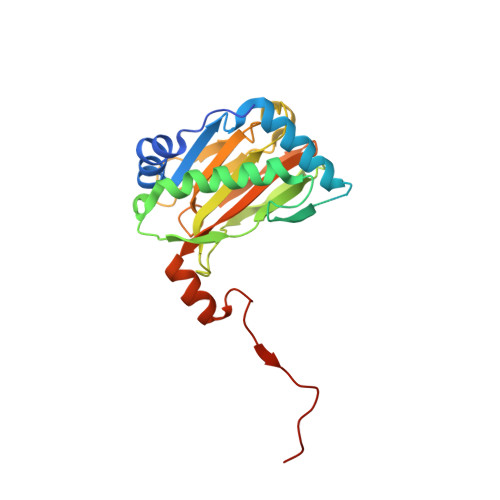Potent and Selective Triazole-Based Inhibitors of the Hypoxia-Inducible Factor Prolyl-Hydroxylases with Activity in the Murine Brain.
Chan, M.C., Atasoylu, O., Hodson, E., Tumber, A., Leung, I.K.H., Chowdhury, R., Gomez-Perez, V., Demetriades, M., Rydzik, A.M., Holt-Martyn, J., Tian, Y., Bishop, T., Claridge, T.D.W., Kawamura, A., Pugh, C.W., Ratcliffe, P.J., Schofield, C.J.(2015) PLoS One 10: 32004
- PubMed: 26147748
- DOI: https://doi.org/10.1371/journal.pone.0132004
- Primary Citation of Related Structures:
5A3U - PubMed Abstract:
As part of the cellular adaptation to limiting oxygen availability in animals, the expression of a large set of genes is activated by the upregulation of the hypoxia-inducible transcription factors (HIFs). Therapeutic activation of the natural human hypoxic response can be achieved by the inhibition of the hypoxia sensors for the HIF system, i.e. the HIF prolyl-hydroxylases (PHDs). Here, we report studies on tricyclic triazole-containing compounds as potent and selective PHD inhibitors which compete with the 2-oxoglutarate co-substrate. One compound (IOX4) induces HIFα in cells and in wildtype mice with marked induction in the brain tissue, revealing that it is useful for studies aimed at validating the upregulation of HIF for treatment of cerebral diseases including stroke.
Organizational Affiliation:
Chemistry Research Laboratory, Department of Chemistry, University of Oxford, Oxford, United Kingdom; Centre for Cellular and Molecular Physiology, University of Oxford, Oxford, United Kingdom.
















